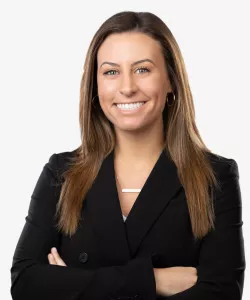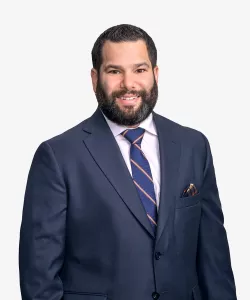College Athletes Cash in on Name, Image, and Likeness
In a move that significantly departs from the NCAA’s strict stance against college athletes’ ability to capitalize on their name, image, and likeness (NIL), the NCAA Board of Directors approved interim policy changes on Wednesday, June 30, 2021, which suspend NCAA enforcement of NIL rule violations if the athlete complies with applicable state law.
This measure paved the way for college athletes to pursue marketing opportunities starting July 1, 2021 – the date that a handful of state statutes that address NIL compensation for college athletes became operative. Such marketing opportunities include social media sponsorships, the ability to sign autographs for money, reimbursement for teaching at camps, participation in paid-for advertising, and the ability to start their own business. In a significant departure from existing restrictions, college athletes may now sign with and/or hire agents to assist them in securing marketing opportunities. As the NIL landscape undergoes dramatic change, this Alert explains how the NCAA is confronting these new state laws, as well as the impact the laws may have on sponsorships moving forward.
Major Hurdles for Clear and Consistent NIL Rules Include Right to Publicity Statutes and Federal Inaction
- The right of publicity, which is the right that “gives an individual the exclusive right to license the use of [his or her] identity for commercial promotion,” has long been protected as a state right. With 24 states that have already enacted and 17 states considering enacting legislation on NIL compensation for college athletes, the NCAA had the difficult task of promulgating rules that universally comply with each state statute.
- As contemplated in Arent Fox’s June 28 Client Alert, the policy changes approved were likely taken, at least partially, in response to the United States Supreme Court’s unanimous ruling in Alston v. NCAA on June 21, which signaled that many aspects of the NCAA’s business model regarding certain player compensation and benefits restraints are suspect to federal antitrust law. With this in mind, the decision to defer to member institutions to implement their own rules may be more efficient in ensuring compliance with the nuances of state NIL statutes as well as federal antitrust law.
- While states continue to pass NIL laws, members of Congress have also been focused on passing legislation that addresses labor, compensation, and other benefits for college athletes. Federal legislation could have the potential to preempt these state statutes and would effectively assist the NCAA in creating a universal framework for NIL compensation. In fact, for months, the NCAA has been actively lobbying Congress to intervene on a national level. NCAA President Mark Emmert noted that “[w]ith the variety of state laws adopted across the country, [the NCAA] will continue to work with Congress to develop a solution that will provide clarity on a national level … [as] [t]he current environment — both legal and legislative — prevents [the NCAA] from providing a more permanent solution and the level of detail student-athletes deserve.” However, failed legislative efforts and partisan views on the proper regulations for NIL compensation nationwide suggest that meaningful federal action is not imminent.
- Notwithstanding the NCAA’s decision to take a backseat in regulating NIL compensation, its June 28 press release noted that “the policy leaves in place the commitment to avoid pay-for-play and improper inducements tied to choosing to attend a particular school. Those prohibitions would remain in effect.” Retaining these safeguards maintains the NCAA’s mission of preserving the integrity of college athletics while acknowledging college athletes’ right of publicity. Furthermore, most, if not all, NIL statutes already address (and prohibit) such concerns to some degree.
Sponsorship Considerations Moving Forward
At least for the foreseeable future, sponsors will need to refer to the applicable state statute and member institution rules, if any, to determine the scope of prospective college athlete-sponsorship deals rather than the central regulatory institution (i.e., the NCAA). Without a universal framework, sponsors, member institutions, and college players will need to address a hodge-podge of state-specific issues and, in particular, inconsistencies between state rules and member institution rules. Some notable general considerations include the following:
- How would the athlete’s sponsorship conflict with or otherwise preclude its member institution’s sponsorships? Would such conflict be grounds for the school to disapprove a prospective player sponsorship and would disapproval be permitted?
- If there is a conflict with its member institution’s sponsorships, will the member institution be required to disclose the basis for such disapproval? Will players have the ability to “cure” or “contest” such conflict?
- What rights do sponsors have to enforce the obligations undertaken by colleges and universities pursuant to their sponsorship and other promotional agreements if student-athletes refuse to participate without having separate agreements with each sponsor?
- What constitutes “official team activities”?
- What is the scope of the product or service sponsorship category? How do sponsors navigate different category definitions for schools and athletes?
- What are the time, place, and manner obligations? How will such obligations affect the athlete’s existing obligations to the NCAA and the applicable member-institution?
- How should data rights be addressed?
- How will sponsors handle underage athletes in sponsorships?
- Does the proposed sponsorship interfere with the athletes’ performance or integrity, particularly if they can make substantial sums of money outside of their athletic performance for their member - institution?
- What constitutes “fair market” pay?
- What is the territory in which the sponsorship is being contemplated?
- What is the term of the sponsorship and should extensions or terminations be related to student-athletes transitioning to professional sports?
- What termination rights should sponsors incorporate in their agreements with colleges and universities and student-athletes? In particular, what should be the scope of morals clauses? Should there be a different standard for college athletes as compared to professional athletes?
These are a few of the issues that will impact sponsorship considerations and strategies. Stay tuned for further updates and discussions on this and related topics.
Contacts
- Related Industries
- Related Practices


